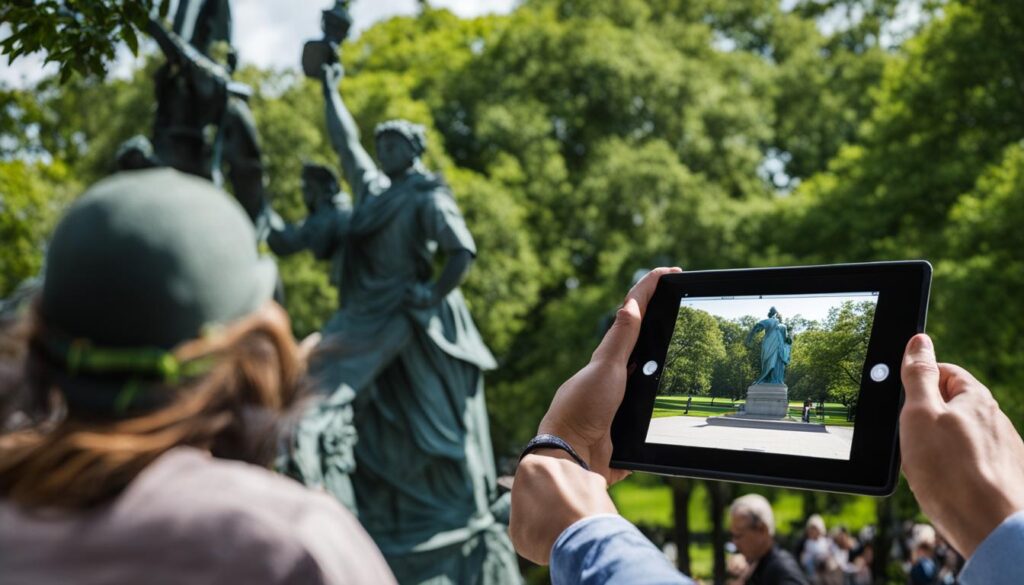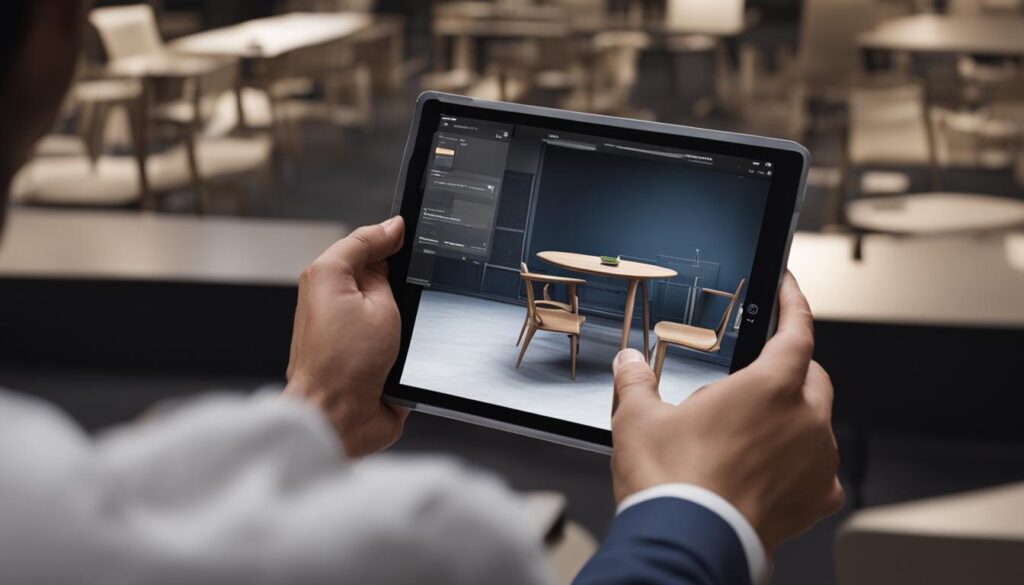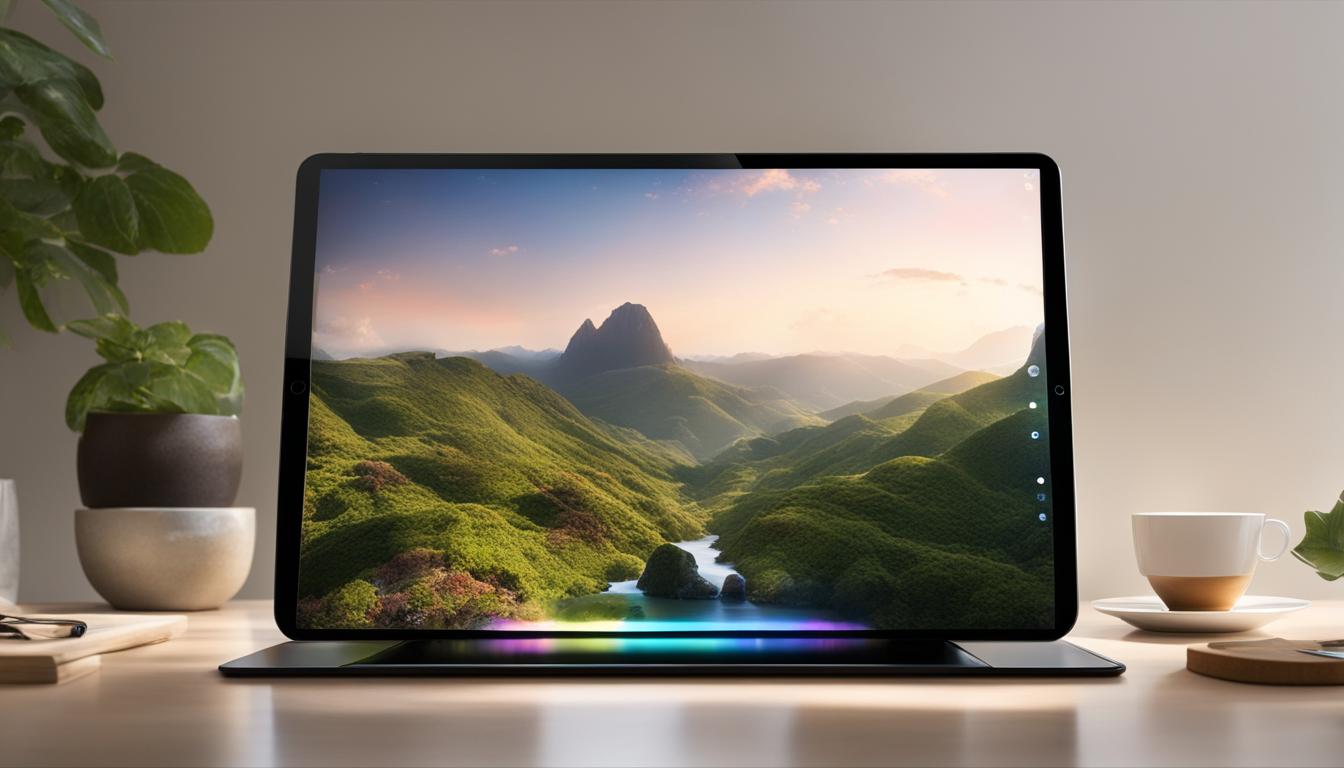Are you wondering if you can upload pictures to Augmented Reality (AR) on your iPad? Well, the answer is yes! With the advancements in technology and the tools provided by Apple, you can easily incorporate your images into immersive AR experiences on your iPad.
In this article, we will walk you through uploading pictures to AR on an iPad using the Object Capture API and RealityKit.
By utilizing the Object Capture API available in macOS Monterey beta and Xcode 13 beta, you can transform your images into detailed 3D models. This powerful API allows you to capture the essence and intricacies of real-world objects and convert them into interactive AR content.
Whether you are a developer or simply interested in exploring AR possibilities, uploading pictures to AR on an iPad opens up a new world of creativity and engagement.
So, let’s dive in and discover how you can bring your pictures to life in Augmented Reality on your iPad!
Contents
- 1 Understanding Object Capture and RealityKit
- 2 Capturing and Uploading Images for Object Capture
- 3 Creating 3D Models with Object Capture
- 4 Conclusion
- 5 FAQ
- 5.1 Can pictures be uploaded to Augmented Reality on an iPad?
- 5.2 How do I upload pictures to Augmented Reality on an iPad?
- 5.3 What are Object Capture API and RealityKit?
- 5.4 How can I capture images for Object Capture?
- 5.5 How do I create 3D models with Object Capture?
- 5.6 How can I integrate Object Capture into my AR experiences?
- 5.7 What are the benefits of using Object Capture and RealityKit?
- 5.8 What can I expect from the AR ecosystem?
- 5.9 What are the possibilities of AR development on an iPad?
- 6 Source Links
Key Takeaways:
- The Object Capture API lets you upload pictures to Augmented Reality on an iPad.
- By converting your pictures into 3D models, you can create immersive AR experiences.
- The Object Capture API is part of the ARKit framework and offers extensive resources and documentation to get started.
- RealityKit enhances the AR experience by combining advanced cameras, motion sensors, and powerful graphics processors.
- High-resolution images and camera enhancements are crucial for capturing detailed and accurate objects for AR.
Understanding Object Capture and RealityKit
The Object Capture API is an innovative computer vision technology that empowers you to convert images of real-world objects into highly detailed 3D models.
It seamlessly integrates with the RealityKit framework, enabling developers to create captivating augmented reality (AR) experiences for iPhone and iPad users.
RealityKit harnesses the power of advanced cameras, motion sensors, and robust graphics processors, combined with custom machine learning algorithms and developer tools, to deliver incredibly realistic and engaging AR experiences.
Leveraging the underlying ARKit technology, which is built directly into iOS and iPadOS, you can effortlessly incorporate AR features into your apps and utilize AR Quick Look to view objects in AR without the need for a dedicated app.
Also read: How Will We Communicate in Augmented Reality?
With Object Capture API, you can take your AR experiences to new heights by transforming static images into dynamic 3D models, offering users an immersive and interactive encounter with real-world objects.
By seamlessly integrating Object Capture with RealityKit, developers can leverage the full potential of AR technology to create unforgettable experiences that blur the boundaries between reality and virtuality.
Whether you aim to develop games, educational apps, or immersive shopping experiences, Object Capture and RealityKit provide the essential tools to unlock the limitless possibilities of AR development.
Capturing and Uploading Images for Object Capture
To capture images for Object Capture, you can use any high-resolution camera, such as an iPhone, iPad, DSLR, or mirrorless camera. The higher the image resolution, the better the quality of the resulting 3D model.
If you’re using an iPhone or iPad, you can use ARKit’s camera enhancements, such as capturing high-resolution photos with depth and gravity data. This allows the Object Capture API to recover the real-world scale and orientation of the object automatically.
Additionally, ARKit provides a new high-resolution background photos API, which allows you to capture pictures at native camera resolution while running an ARSession. These camera enhancements ensure you capture detailed, accurate images for creating high-quality 3D models.
By utilizing the capabilities of high-resolution cameras and ARKit’s camera enhancements, you can capture images that provide the necessary level of detail to create immersive and realistic AR experiences through Object Capture.
| Capturing and Uploading Images for Object Capture | Benefits |
|---|---|
| Utilize high-resolution cameras | – Capture detailed images – Generate high-quality 3D models |
| Take advantage of ARKit’s camera enhancements | – Capture high-resolution photos – Recover real-world scale and orientation |
| ARKit’s high-resolution background photos API | – Capture photos at native camera resolution – Maintain image quality during ARSession |
Remember, when capturing and uploading images for Object Capture, the quality and resolution of your photos will significantly impact the final result.
Using high-resolution cameras and leveraging the camera enhancements provided by ARKit ensures that you capture the necessary level of detail and accuracy for creating stunning 3D models.
Also read: Does an Android Phone Support Augmented Reality?

Creating 3D Models with Object Capture
Once you have captured the necessary images, you can use the Object Capture API and the Photogrammetry API within RealityKit to convert them into 3D models.
The Object Capture API utilizes computer vision techniques to analyze the images and generate a geometric mesh and various material maps, including textures. The resulting 3D models contain a high level of detail and can be optimized for different use cases, ranging from web-based and mobile experiences to high-end interactive applications.
By following the best practice guidelines provided by Apple, you can ensure the best possible results when creating 3D models using Object Capture.
| Benefits of Creating 3D Models with Object Capture | Best Practices for Creating 3D Models |
|---|---|
|
|
By carefully following these best practices, you can maximize the quality and fidelity of the 3D models created with Object Capture. This will result in stunning visuals and realistic representations of real-world objects in your AR experiences.

Critical Components of the Augmented Reality Ecosystem
To understand the full scope of AR capabilities and how it integrates with Object Capture, it’s essential to delve into the critical components of the augmented reality ecosystem.
These components synergistically work together to provide immersive AR experiences on AR-enabled devices like iPhones and iPads. Let’s explore each component:
| AR Component | Description |
|---|---|
| AR-enabled Devices | Includes iPhones and iPads with built-in AR capabilities, equipped with advanced cameras, motion sensors, and powerful graphics processors. |
| AR Apps | Thousands of AR apps are available on the App Store, offering various AR experiences across different industries. |
| ARKit | The underlying technology enables developers to incorporate AR features into their apps and utilize AR Quick Look for viewing objects in AR without downloading a dedicated app. |
| RealityKit | A robust framework that combines advanced cameras, motion sensors, custom machine learning, and developer tools to create realistic and engaging AR experiences. |
| Object Capture | A computer vision technology that transforms real-world images into detailed 3D models, seamlessly integrated into AR experiences through the RealityKit framework. |
Transforming Industries with AR
AR has revolutionized countless industries, unlocking new possibilities for businesses and consumers. Here are a few examples of how AR is being utilized across different sectors:
- Gaming: Immersive AR games that blend virtual elements with the real world, creating unique gameplay experiences.
- Education: Interactive AR learning tools that bring textbooks to life and enhance student engagement.
- Shopping: Virtual try-on experiences allow customers to see how products look or fit in real-time.
- Architecture and Design: AR visualization tools that enable architects and designers to overlay virtual models onto physical spaces, facilitating planning and collaboration.
- Healthcare: AR applications that assist in surgical planning, medical training, and patient education.
“The expanding augmented reality ecosystem offers endless possibilities for businesses and developers to leverage AR technologies, providing immersive and interactive experiences that enhance various aspects of our daily lives.”
Whether it’s enhancing entertainment, revolutionizing education, improving shopping experiences, or transforming industries, the expanding AR ecosystem allows businesses and developers to tap into the power of AR and shape the future of technology.
With Object Capture as a critical tool, the possibilities for creating captivating and engaging AR experiences on AR-enabled devices continue to grow.
Conclusion
In conclusion, the Object Capture API and RealityKit framework have opened up new possibilities for AR development on the iPad. With the ability to upload pictures to Augmented Reality, developers can create immersive and interactive experiences by converting high-quality images into detailed 3D models.
Apple’s AR-focused hardware and software, combined with extensive resources and documentation, provide a comprehensive platform for exploring the world of augmented reality.
Whether you’re a beginner or an experienced AR developer, the Object Capture API and RealityKit offer a wide range of capabilities to bring your imagination to life. Following the guidelines and best practices, you can easily integrate 3D models into your AR experiences and use Apple’s cutting-edge technology.
With the expanding AR ecosystem and the popularity of AR-enabled devices like the iPad, the potential for AR development is vast.
AR offers endless possibilities for innovative and engaging experiences, from gaming and education to shopping. So why not start exploring the world of AR development on your iPad and unleash your creativity in augmented reality?
FAQ
Can pictures be uploaded to Augmented Reality on an iPad?
You can upload pictures to Augmented Reality on an iPad using the Object Capture API available in macOS Monterey beta and Xcode 13 beta. This allows you to convert your images into 3D models and incorporate them into AR experiences.
How do I upload pictures to Augmented Reality on an iPad?
To upload pictures to Augmented Reality on an iPad, you must capture high-resolution images using a compatible camera, such as an iPhone or iPad. Then, you can use the Object Capture API and the Photogrammetry API within RealityKit to convert these images into detailed 3D models that can be integrated into your AR experiences.
What are Object Capture API and RealityKit?
The Object Capture API is a computer vision technology that enables you to transform images of real-world objects into detailed 3D models. RealityKit is a framework that allows developers to create immersive and interactive AR experiences for iPhones and iPads. It combines advanced cameras, motion sensors, and powerful graphics processors with custom machine learning and developer tools to deliver realistic AR experiences.
How can I capture images for Object Capture?
You can capture images for Object Capture using any high-resolution camera, such as an iPhone, iPad, DSLR, or mirrorless camera. The higher the image resolution, the better the quality of the resulting 3D model. If you’re using an iPhone or iPad, you can use ARKit’s camera enhancements, which allow you to capture high-resolution photos with depth and gravity data.
How do I create 3D models with Object Capture?
To create 3D models with Object Capture, you can use the Object Capture API and the Photogrammetry API within RealityKit. These APIs analyze the captured images and generate geometric mesh and material maps, including textures, to create detailed and accurate 3D models of the objects.
How can I integrate Object Capture into my AR experiences?
Once you have created the 3D models using Object Capture, you can easily integrate them into your AR experiences using the RealityKit framework. You can add Object Capture assets to a RealityKit project in Xcode and apply stylized shaders and animations to bring them to life. ARKit’s tracking capabilities allow you to overlay a 3D guidance UI on top of the model, ensuring good coverage from all sides for an immersive AR experience.
What are the benefits of using Object Capture and RealityKit?
Object Capture and RealityKit offer developers the tools and frameworks to create captivating and engaging AR experiences for iPhones and iPads. With high-quality 3D models generated from Object Capture integrated into AR experiences using RealityKit, developers can deliver realistic and interactive AR content that takes advantage of Apple’s AR-focused hardware and software.
What can I expect from the AR ecosystem?
The expanding augmented reality ecosystem offers endless possibilities for exploring and utilizing AR in various industries, including gaming, education, shopping, and more. With hundreds of millions of AR-enabled devices and thousands of AR apps on the App Store, Apple’s AR platform provides a vast audience and market for developers to showcase their AR creations.
What are the possibilities of AR development on an iPad?
AR development on an iPad opens up a world of possibilities. By uploading pictures to Augmented Reality using the Object Capture API and integrating them into AR experiences with RealityKit, developers can create immersive and interactive AR applications, ranging from simple AR games to sophisticated educational and retail experiences.




